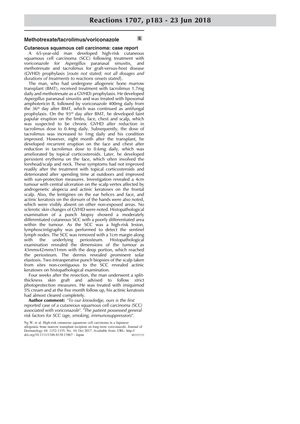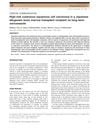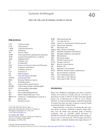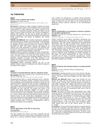Methotrexate, Tacrolimus, Voriconazole: High-Risk Cutaneous Squamous Cell Carcinoma in a 65-Year-Old Man
June 2018
in “
Reactions Weekly
”
cutaneous squamous cell carcinoma SCC voriconazole methotrexate tacrolimus graft-versus-host disease GVHD allogeneic bone marrow transplant BMT topical corticosteroids erythema actinic keratosis imiquimod 5% cream immunosuppression skin cancer antifungal immunosuppressant bone marrow transplant topical steroids skin redness skin lesions Aldara immune suppression

TLDR A 65-year-old man developed a serious skin cancer linked to a drug he was taking for a fungal infection after a bone marrow transplant.
A 65-year-old man developed high-risk cutaneous squamous cell carcinoma (SCC) after being treated with voriconazole for Aspergillus paranasal sinusitis and methotrexate and tacrolimus for graft-versus-host disease (GVHD) prophylaxis following an allogeneic bone marrow transplant (BMT). The SCC was suspected to be associated with voriconazole, which he started taking 36 days after BMT and continued as antifungal prophylaxis. The man initially presented with a faint papular eruption on various parts of his body, which was initially suspected to be chronic GVHD. Despite improvements with increased tacrolimus and topical corticosteroids, he later developed persistent erythema and a 4cm tumor with central ulceration on the scalp, which was diagnosed as moderately to poorly differentiated cutaneous SCC. The tumor was surgically removed, and the patient was advised to follow strict photoprotection measures and treated with imiquimod 5% cream, which almost completely cleared his actinic keratosis after five months. The authors noted that this was the first reported case of cutaneous SCC associated with voriconazole and highlighted the patient's general risk factors for SCC, including age, smoking, and immunosuppression.





